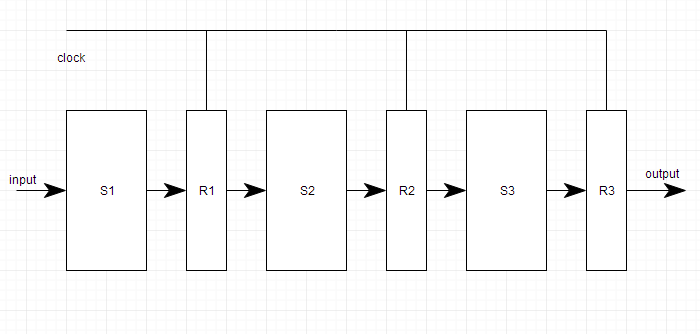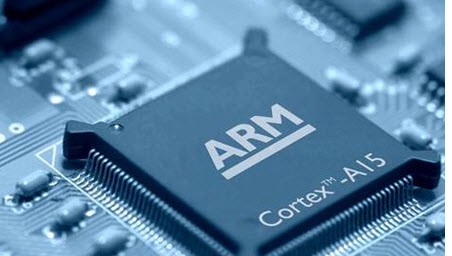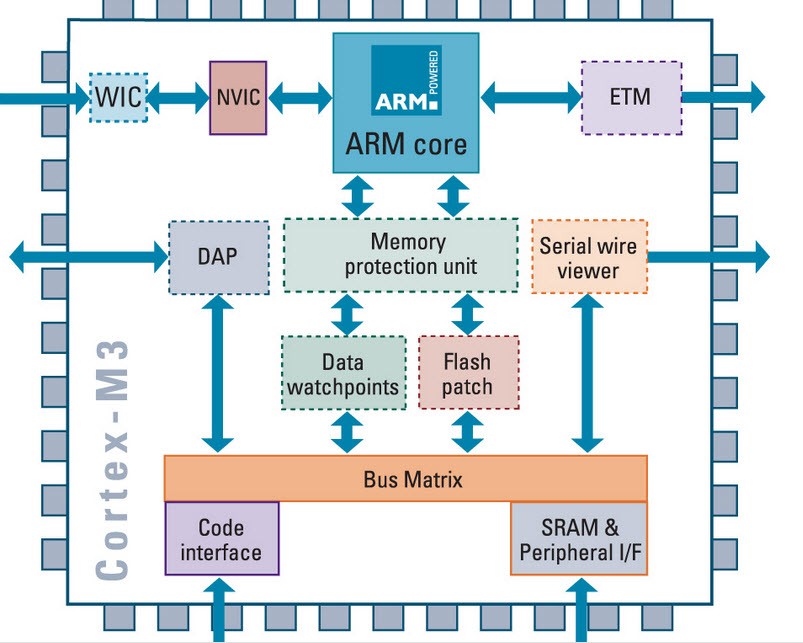- Get link
- X
- Other Apps
computer organization
Arm processer

Arm processer
The ARM microcontroller stands for Advance Risk Machine; it is one of the extensive and most licensed processor cores in the world. The first ARM processor was developed in the year 1978 by Cambridge University, and the first ARM RISC processor was produced by the Acorn Group of Computers in the year 1985. These processors are specifically used in portable devices like digital cameras, mobile phones, home networking modules and wireless communication technologies and other embedded systems due to the benefits, such as low power consumption, reasonable performance, etc. This article gives an overview of ARM architecture with each module’s principle of working.
ARM Architecture
The ARM architecture processor is an advanced reduced instruction set computing [RISC] machine and it’s a 32bit reduced instruction set computer (RISC) microcontroller. It was introduced by the Acron computer organization in 1987. This ARM is a family of microcontroller developed by makers like ST Microelectronics,Motorola, and so on. The ARM architecture comes with totally different versions like ARMv1, ARMv2, etc., and, each one has its own advantage and disadvantages.
The ARM Architecture
- Arithmetic Logic Unit
- Booth multiplier
- Barrel shifter
- Control unit
- Register file
This article covers the below mentioned components.
The ARM processor conjointly has other components like the Program status register, which contains the processor flags (Z, S, V and C). The modes bits conjointly exist within the program standing register, in addition to the interrupt and quick interrupt disable bits; Some special registers: Some registers are used like the instruction, memory data read and write registers and memory address register.
pipeline:
Pipelining is the process of accumulating instruction from the processor through a pipeline. It allows storing and executing instructions in an orderly process. It is also known as pipeline processing.
Pipelining is a technique where multiple instructions are overlapped during execution. Pipeline is divided into stages and these stages are connected with one another to form a pipe like structure. Instructions enter from one end and exit from another end.
Pipelining increases the overall instruction throughput.
In pipeline system, each segment consists of an input register followed by a combinational circuit. The register is used to hold data and combinational circuit performs operations on it. The output of combinational circuit is applied to the input register of the next segment.

Pipeline system is like the modern day assembly line setup in factories. For example in a car manufacturing industry, huge assembly lines are setup and at each point, there are robotic arms to perform a certain task, and then the car moves on ahead to the next arm.
Types of Pipeline
It is divided into 2 categories:
- Arithmetic Pipeline
- Instruction PipelineArithmetic pipeline:
- Each stage performs only its specific function, it does not have to be capable of performing the task of any other stage. An individual stage might be an adder or multiplier or other hardware to perform some arithmetic function.

Arithmetic pipeline for floating point add/subtract operations - Variations on arithmetic pipeline are Fixed arithmetic pipeline.
- is not very useful. Unless the exact function performed by the pipeline is required, the CPU cannot use the fixed arithmetic pipeline. Configurable arithmetic pipeline.
- is better suitable as it uses multiplexer as its input. The control unit of CPU sets the select signals of the multiplexer to control flow of data (i.e. pipeline is configurable). Vectored arithmetic unit.
- A CPU may include a vectored arithmetic unit. A vectored arithmetic unit contains multiple functional units to perform addition, multiplication, shifting, division etc) to operate different arithmetic operations in parallel.
- Used to implement floating point operations, multiplication of fixed point numbers and similar computations encountered in scientific operations.
- Although arithmetic pipelines can perform many iterations of the same operation in parallel, they cannot perform different operations simultaneously.
- Instruction fetch
- Instruction decode and register fetch
- Execute
- Memory access
- Register write back
An arithmetic pipeline is similar to an assembly line in a factory. Data enters a stage of pipeline, which performs some arithmetic operation on data. The results are then passed to the next stage, which performs its operation and so on until the final computation has been performed.Instruction pipelining
Jump to search Basic five-stage pipeline in a RISC machine (IF = Instruction Fetch, ID = Instruction Decode, EX = Execute, MEM = Memory access, WB = Register write back). The vertical axis is successive instructions, the horizontal axis is time. So in the green column, the earliest instruction is in WB stage, and the latest instruction is undergoing instruction fetch.Instruction pipelining is a technique used in the design of modern microprocessors, microcontrollers and CPUs to increase their instruction throughput (the number of instructions that can be executed in a unit of time).The main idea is to divide (termed "split") the processing of a CPU instruction, as defined by the instruction microcode, into a series of independent steps of micro-operations (also called "microinstructions", "micro-op" or "µop"), with storage at the end of each step. This allows the CPUs control logic to handle instructions at the processing rate of the slowest step, which is much faster than the time needed to process the instruction as a single step.The term pipeline refers to the fact that each step is carrying a single microinstruction (like a drop of water), and each step is linked to another step (analogy; similar to water pipes).Most modern CPUs are driven by a clock. The CPU consists internally of logic and memory (flip flops). When the clock signal arrives, the flip flops store their new value then the logic requires a period of time to decode the flip flops new values. Then the next clock pulse arrives and the flip flops store another values, and so on. By breaking the logic into smaller pieces and inserting flip flops between pieces of logic, the time required by the logic (to decode values till generating valid outputs depending on these values) is reduced. In this way the clock period can be reduced.For example, the RISC pipeline is broken into five stages with a set of flip flops between each stage as follows:
Basic five-stage pipeline in a RISC machine (IF = Instruction Fetch, ID = Instruction Decode, EX = Execute, MEM = Memory access, WB = Register write back). The vertical axis is successive instructions, the horizontal axis is time. So in the green column, the earliest instruction is in WB stage, and the latest instruction is undergoing instruction fetch.Instruction pipelining is a technique used in the design of modern microprocessors, microcontrollers and CPUs to increase their instruction throughput (the number of instructions that can be executed in a unit of time).The main idea is to divide (termed "split") the processing of a CPU instruction, as defined by the instruction microcode, into a series of independent steps of micro-operations (also called "microinstructions", "micro-op" or "µop"), with storage at the end of each step. This allows the CPUs control logic to handle instructions at the processing rate of the slowest step, which is much faster than the time needed to process the instruction as a single step.The term pipeline refers to the fact that each step is carrying a single microinstruction (like a drop of water), and each step is linked to another step (analogy; similar to water pipes).Most modern CPUs are driven by a clock. The CPU consists internally of logic and memory (flip flops). When the clock signal arrives, the flip flops store their new value then the logic requires a period of time to decode the flip flops new values. Then the next clock pulse arrives and the flip flops store another values, and so on. By breaking the logic into smaller pieces and inserting flip flops between pieces of logic, the time required by the logic (to decode values till generating valid outputs depending on these values) is reduced. In this way the clock period can be reduced.For example, the RISC pipeline is broken into five stages with a set of flip flops between each stage as follows:
- Get link
- X
- Other Apps


Comments
Post a Comment